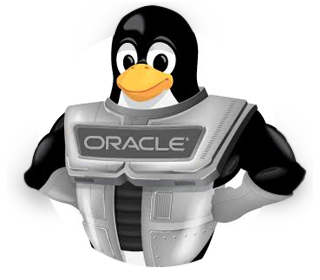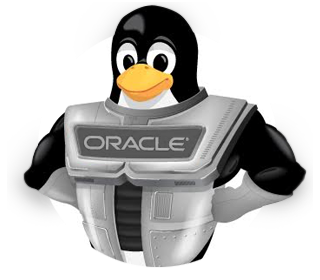Centaurus today is becoming a Linux Foundation Project. The Centaurus Infrastructure Project is a cloud infrastructure platform for building distributed cloud as well as a platform for modern cloud native computing. It supports applications and workloads for 5G, Edge and AI and unifies the orchestration, network provisioning and management of cloud compute and network resources at a regional scale.
Founding members include Click2cloud, Distributed Systems, Futurewei, GridGain Systems, Reinvent Labs, SODA Foundation and Tu Wien Informatics. Centaurus is an umbrella project for modern distributed computing and hosts both Arktos and Mizar. Arktos is a compute cluster management system designed for large scale clouds, while Mizar is the high-performance cloud-network powered by eXpress Data Path (XDP) and Geneve protocol for high scale cloud. More members and projects are expected to be accepted in the coming months.
“The market is changing and customers require a new kind of cloud infrastructure that will cater to modern applications and workloads for 5G, AI and Edge,” said Mike Dolan, senior vice president and general manager for Linux Foundation Projects. “Centaurus is a technical project with strategic vision, and we’re looking forward to a deep collaboration that advances cloud native computing for generations to come.”
Current cloud infrastructure technology needs are evolving, requiring companies to manage a larger scale of compute and network resources across data centers and more quickly provision those resources. Centaurus unifies management across bare metal, VMs, containers and serverless, while reducing operational costs and delivering on the low latency and data privacy requirements of edge networks. Centaurus offers a consistent API experience to provision and manage virtual machines, containers, serverless and other types of cloud resources by combining traditional (Infrastructure as a Service) IaaS and Platform as a Service (PaaS) layers into one common infrastructure platform that can simplify cloud management.
“The Linux Foundation’s support in expanding the Centaurus community will accelerate cloud native infrastructure for the most pressing compute and networking demands,” said Dr. Xiong Ying, the current acting TSC chair, Centaurus Infrastructure Project. “It’s large network of open source developers and projects already supporting this future will enable mass collaboration and important integrations for 5G, AI and Edge workloads.”
To contribute to Centaurus, please visit: https://www.centauruscloud.io/
Supporting Member Quotes
Click2cloud
“Click2cloud has been part of the development of Centaurus, which is world class software that will lead organizations to have a clear transition from IaaS to Cloud Native Infrastructure. Click2cloud has already started a development program to enable the journey from IaaS (Openstack) to Cloud Native migration, 5G cloud based on Centaurus reference architecture to support the partner ecosystem. We are very excited for Centaurus to be a part of Linux Foundation,” said Prashant Mishra, CEO, Click2cloud.
Futurewei
“Distributed cloud architecture is a natural evolution for cloud computing infrastructure. Centaurus is a cloud native infrastructure platform aiming to unify management and orchestration of virtual machines, containers, and other forms of cloud resources natively at scale and at the edge. We have seen many enterprise users and partners wanting a unified solution to build their distributed cloud to manage virtual machines, containers or bare metal-based applications running at cloud as well as at edge sites. We are very pleased to see, today, the Centaurus Infrastructure project becomes a Linux Foundation open-source project, providing an option for community and enterprise users to build their cloud infrastructure to run and manage next generation applications such as AI, 5G and IoT. We look forward to working with the open-source community to realize the vision of Centaurus,” said Dr. Xiong Ying, Sr. Technical VP, Head of Cloud Lab, Futurewei.
GridGain Systems
“Creating and managing a unified and scalable distributed cloud infrastructure that extends from cloud to edge is increasingly a challenge for organizations worldwide. GridGain Systems has been a proud sponsor and active participant in the development of in-memory computing solutions to support the Centaurus project. We look forward to helping organizations realize the benefits of Centaurus and continuing to help extend its scalability and adoption,” said Nikita Ivanov, Co-Founder and CTO, GridGain Systems.
Reinvent Labs
“We are a young company, which specializes in cloud computing and delivering cloud-native solutions to our customers across various industries. As such, we are ever stronger witnessing the need to manage cloud services and applications that span across complex and heterogeneous infrastructures, which combine containers, VMs and serverless functions. What is more, such infrastructures are also starting to grow beyond traditional cloud platforms towards the edge on the network. Being part of the Centaurus project will not only allow us to innovate in this space and deliver a platform for unified management of infrastructure resources across both large Cloud platforms and the Edge, but it will also enable us to connect and collaborate with like-minded members for thought leadership and industry best practices,” said Dr. Stefan Nastic, founder and CEO of Reinvent Labs GmbH.
The SODA Foundation
“The SODA Open Data Framework is an open source data and storage management framework that goes from the edge to the core to the cloud. Centaurus offers the opportunity for SODA to be deployed in the next generation cloud infrastructure for 5G, AI and Edge, and allows both communities to innovate together,” said Steven Tan, SODA Foundation Chairman and VP & CTO Cloud Solution, Storage at Futurewei.
TU Wien
“We are very excited to be part of the Centaurus ecosystem and honored to be part of this open source movement and contributing in the fields of IoT, Edge intelligence, and Edge and Cloud Computing, including networking and communication aspects, as well as orchestration, resource allocation, and task scheduling,” said Prof. Schahram Dustdar, IEEE Fellow, Member Academia Europaea Professor of Distributed Systems, TU Wien, Austria.
The post Centaurus Infrastructure Project Joins Linux Foundation to Advance Cloud Infrastructure for 5G, AI and Edge appeared first on Linux Foundation.






 QEMU is the backbone of virtualization on Linux, providing control plane and emulation services for guest VMs. One of the most common complaints about QEMU stems from its monolithic nature — one process that does both control and emulation exposes more “surface area” that we, in turn, have to protect from security vulnerabilities. Well perhaps no longer, as multi-process QEMU has now been accepted…
QEMU is the backbone of virtualization on Linux, providing control plane and emulation services for guest VMs. One of the most common complaints about QEMU stems from its monolithic nature — one process that does both control and emulation exposes more “surface area” that we, in turn, have to protect from security vulnerabilities. Well perhaps no longer, as multi-process QEMU has now been accepted…